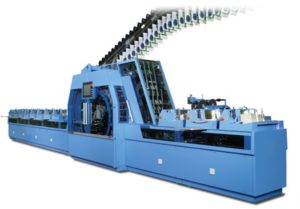An old theory of personality holds that people fall into two types–A and B. Put simply, Type A personalities are highly aggressive and competitive, whereas Type B are not. We all have seen this broad difference in personalities. Some people we encounter seem ready to walk over their own grandmothers to get ahead. Like all stereotypes, this is a gross oversimplification, but there’s a lot of truth in it.
In the corporate world, type A personalities tend to rise to the top. Why? Because their very personality is aggressive and competitive. They like to push, push, push for what they want and are willing to drive their agenda at any cost. They frequently are talkers but rarely listeners. They also judge people through their own lens. If you’re an introvert, quiet, or deliberative, if you’re a listener instead of a talker, they think you are not “driven” and probably not worth listening to or promoting.
The question is: does being type A make you right? Does it make your opinions more valuable? I cannot think of any reason why being aggressive and competitive makes you more likely to be correct about anything. In fact, I think the opposite is true. If you don’t listen well and are always pushing your own agenda, you’re less likely to consider the opinions of others, which means your decision-making is less well-rounded.
I’ve pointed out before, that quiet, deliberative people, type B’s, are often the ones you really want to listen to. However, in the corporate world, they are often kicked to the curb. “He never says anything in meetings,” the type A’s say. Well, if you hired him maybe he’s actually a smart person but has a hard time contributing in a meeting with 20 people all talking fast. Maybe he needs time to digest what he heard before providing recommendations.
Type A’s tend to be in positions of power not necessarily because they are smarter but because they fight for position in hierarchies. This is not to say they are without value. Their decisiveness and drive are very important to a healthy organization. They can break indecision and move companies forward in ways type B’s cannot.
The key for both personality types is the old Greek maxim: know thyself. If you’re type A, you need to be careful not to be too aggressive. Listen to your quieter colleagues, accept that they may have a different personality, and meet them where they are at. Call on them in meetings, give them time to deliberate and come back to you.
For type B’s, you need to learn to speak out more. You’re probably more respected than you realize, and when you do speak, you’re probably listened to. Try to find forums that are more comfortable for you, like expressing your opinion in writing or 1:1’s.
Sadly, because of the cutthroat nature of the business world, I see little self-awareness and frequent domination of businesses by type A’s. At the end they may get people to follow them, but if they’re leading you off a cliff, their drive may not be such a good thing.



